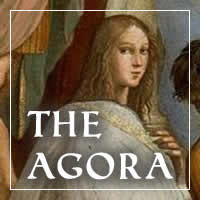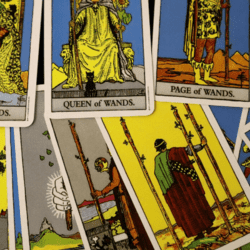Although my main focus is (obviously) Irish based Paganism, I have also been Heathen since the mid 2000’s. This is something that I’ve discussed on my personal blog a couple times but hasn’t come up here before. Even before I became interested in Heathenry, though, I was interested in runes — in fact I began using them as a form of divination when I was in high school. I’m ashamed to admit I and a couple friends even used to write notes to each other in elder Futhark runes in school on the (effective) theory that if we were busted by a teacher they wouldn’t be able to read any of it. As an adult I’ve taught several rune studies, both short and long running, also based on the elder Futhark. So when a new book on runes comes out I’m always interested in giving it a read and I thought doing a book review might be a fun change of pace here.

Technically Runes Plain and Simple by Kim Farnell isn’t a new book — its a 2016 reprint of a 2006 book previously titled Simply Runes. Like many re-titled re-releases, it’s not easy to tell that this is the case unless you happen to read the copyright page or if you own the original and are familiar enough with it to recognize the text. The amazon advertisement does make note of this fact though at the bottom of the description if you are looking to buy a copy on their site.
Altogether, the book is a mixed bag, with some good sections and some not-good ones. I’ll also say, right out of the gate, that the book has no bibliography or recommended reading list and cites no sources at all. Instead, the author is prone to saying things like “some people say,” making it really frustrating when the author makes an assertion that seems off base or odd; there’s really no way to know if its the author’s own idea or if she’s pulling it from another source.
So, the good bits:
- The book includes a really useful chapter on making your own runes which also discusses the qualities of different types of woods, not just metaphysical properties but things like the color and grain of the wood.
- The author is really clear that the 25th blank rune is a modern concept, and its use is optional. That’s usually something I look for when deciding if a rune book is any good.
- Each rune is given its own chapter where its meaning is discussed both upright and reversed¹, as well as suggested magical uses. The description and interpretations given are fairly sound, although some of the assertions require critical thinking or cross referencing, and while I may not agree with all of the author’s ideas that’s just a matter of opinion.
- The suggested rune spreads are good and seem quite serviceable.
Now, the dodgy bits — the history and mythology:
- Much of the mythology given in the book isn’t accurate. Its not even possible in this sort of blog to get into each issue one by one, but for a few quick examples: the author says Heimdall helped lead the Vanir in the war against the Aesir, but we have no story supporting this; the book says that Etins created the first man and woman when it was actually Odin and his brothers; and the author incorrectly says that the Vanir beheaded Hoenir when they felt their hostage exchange with the Aesir was based in trickery when it was actually Mimir they decapitated.
- I also found more generally that it was sometimes confusing to suss out what was the author’s personal opinion or suggestion and what was being asserted as a fact. For example in the chapter on Urusz she says that “it was believed that the bull was dedicated to Thor so this rune [uruz] is often associated with him” (page 45). This isn’t something I’m at all familiar with, and I genuinely don’t know if it’s being asserted as a historic fact — which I’d personally disagree with — or just the author’s opinion. Passages like this are found throughout the book and could be really confusing to people new to the runes or to Heathenry.
- The chapter on runic magic is far too short, and what is offered is questionable.
- There is a correspondence table included after the final chapter which offers suggestions that are, in several places, vastly at odds from the usual understandings of runic correspondences. For example Fehu is usually associated with Freya or Freyr, if anyone, yet this book associates it with the Aesir.
- The runic calendar/clock, I assume, is the author’s own invention and it may be a useful idea if people find it works well — I feel compelled however to point out that the word “Halloween” is in no way related to the name of the rune Hagalaz as the author asserts.
So, in the end if I were giving it a rating 1 out of 5, with 1 as terrible and 5 as excellent, I’d probably give it a 2 and a half. Skip the introduction entirely and go right to chapter 1, read the rune chapters with a grain of salt, ignore all references to mythology, stop after chapter 7, and its a decent very basic introduction to the runes. I would still suggest supplementing it with another rune book as well though for a different point of view, as this author does tend towards a very intuitive approach that may not resonate with people who prefer their magic or divination more grounded in history. There are better books out there, but there are also much worse books out there, so ultimately this one lands somewhere in the middle.
- I don’t use reversed meanings myself, and I’m not a fan of including them, but that’s a personal quibble not a criticism of the book. (back)

Patheos Pagan on Facebook.

the Agora on Facebook
Irish-American Witchcraft is published bi-monthly on Tuesdays here on the Agora. Subscribe via RSS or e-mail!
Please use the links to the right to keep on top of activities here on the Agora as well as across the entire Patheos Pagan channel.

















